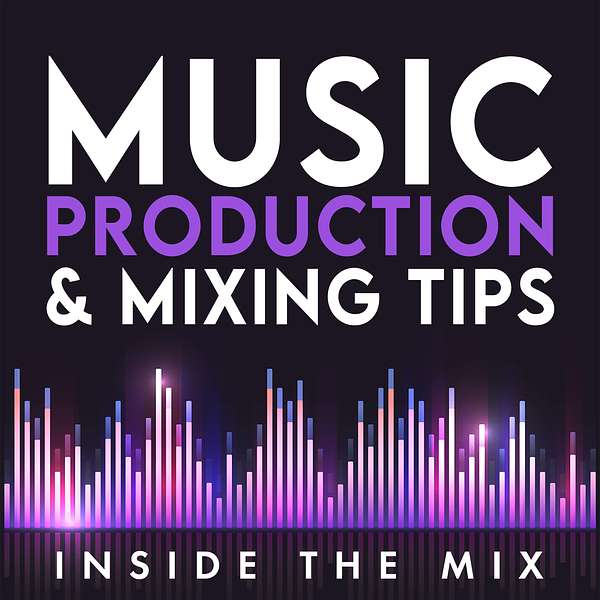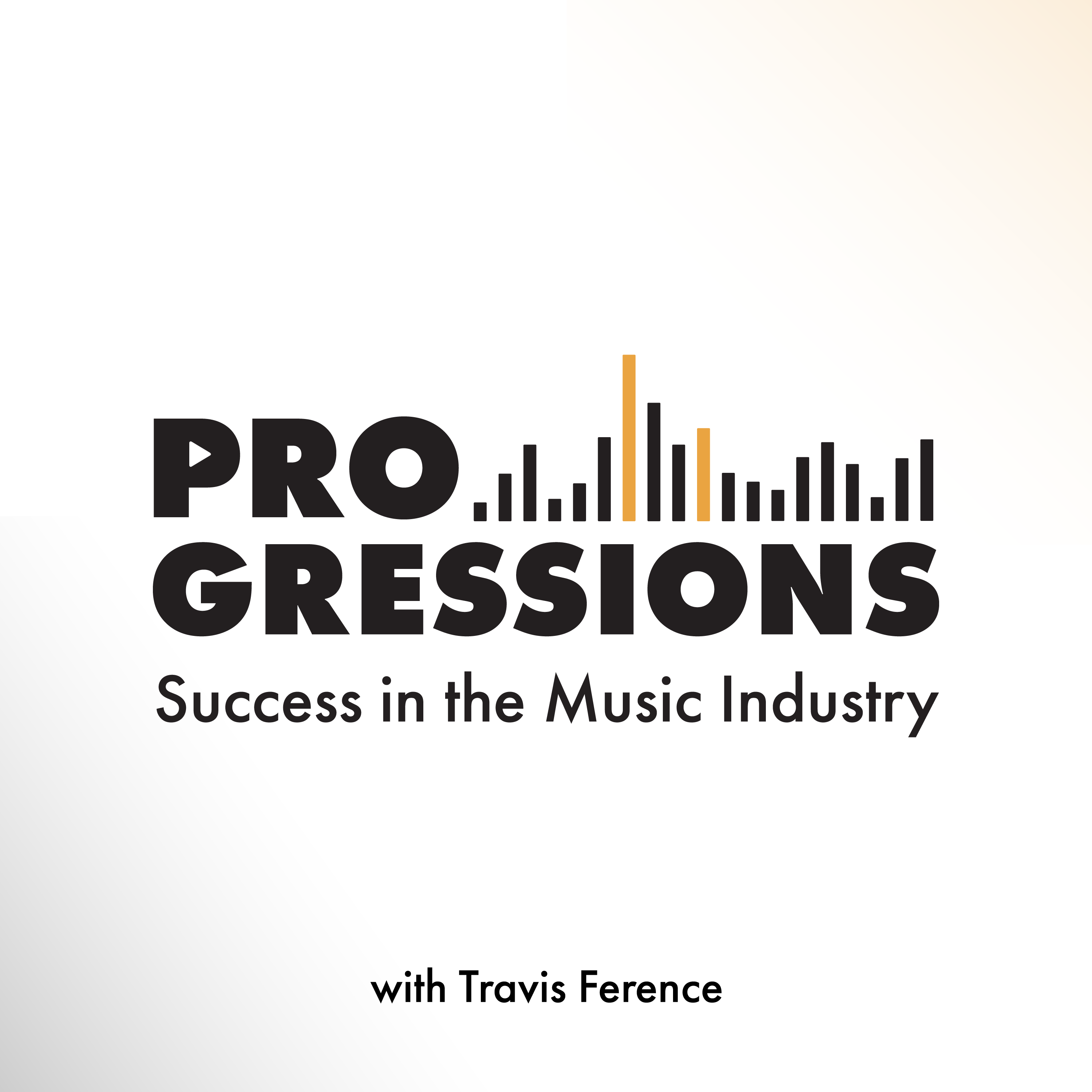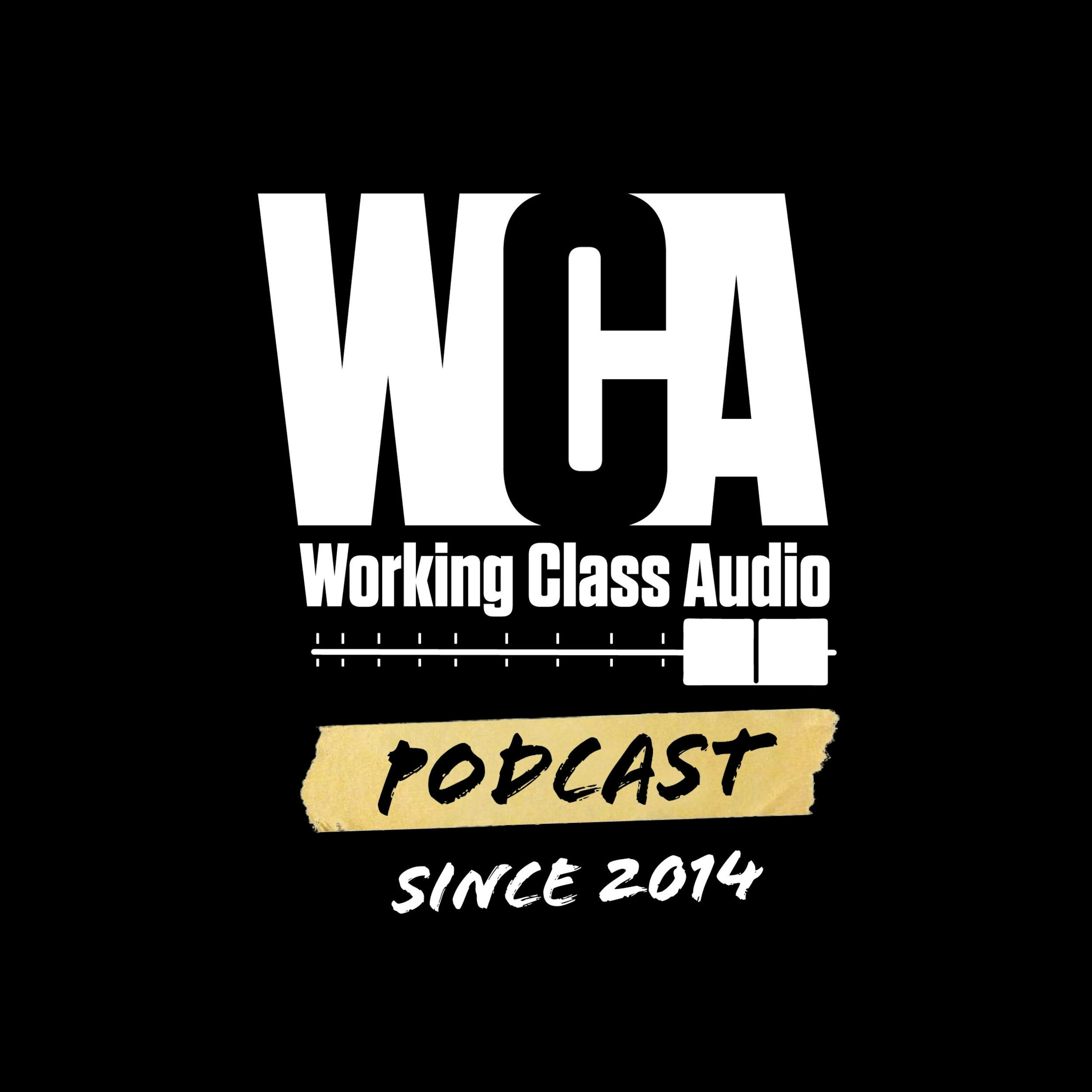
Music Production and Mixing Tips Podcast for DIY Producers and Artists | Inside The Mix
If you're searching for answers on topics such as: How do I make my mixes sound professional? What equipment do I need to start producing music at home? What is the difference between mixing and mastering? What are some of your favourite production tools and techniques? How do I get my music noticed by record labels? Or what are the key elements of an effective music marketing strategy? Either way, you’re my kind of person, and there's something in this podcast for you!
I'm Marc Matthews, and I host the Inside The Mix Podcast. It's the ultimate serial podcast for music production and mixing enthusiasts. Say goodbye to generic interviews and tutorials, because I'm taking things to the next level. Join me as I feature listeners in round table music critiques and offer exclusive one-to-one coaching sessions to kickstart your music production and mixing journey. Prepare for cutting-edge music production tutorials and insightful interviews with Grammy Award-winning audio professionals like Dom Morley (Adele) and Mike Exeter (Black Sabbath). If you're passionate about music production and mixing like me, Inside The Mix is the podcast you can't afford to miss!
Start with this audience-favourite episode: #175: What's the Secret to Mixing Without Muddiness? Achieving Clarity and Dynamics in a Mix
Thanks for listening!
Music Production and Mixing Tips Podcast for DIY Producers and Artists | Inside The Mix
#140: Get Guitars to Sit Perfectly in the Mix with THIS Quick Electric Guitar Mixing Secret Weapon
Have you ever wondered how you make two guitars sound good together? Maybe you're seeking answers to topics: how do I get my guitar to sit in the mix, how do you mix rhythm guitars or even just how do you mix guitar properly? Then check out EP 140 of the Inside The Mix podcast.
Fresh from the sunny yet treacherous beaches of Westwood Ho! in North Devon, I've learned that the only thing more painful than a wicked sunburn is a distorted guitar that just won't sit right in the mix. In my latest Inside the Mix podcast episode, I recount this amusingly painful holiday anecdote before pivoting to some serious music production magic. I’m spilling the beans on my go-to method for giving your distorted rhythm guitars a presence that slices through the mix like a hot knife through butter, all harnessed within the powerhouse that is Logic Pro. By deftly manipulating an auxiliary send with a dash of compression and a sprinkle of console EQ, I promise you’ll be hearing your guitars like never before.
Dive into the gamified world of my Producer Growth Scorecard and discover how turning the dials on your music production process can ramp up your creativity and output.
Grab your FREE Producer Growth Scorecard!
✸✸✸✸✸✸✸✸✸✸✸✸✸✸✸✸✸✸✸✸✸✸✸✸✸✸
Are you READY to stop procrastinating and release more music?
Download your FREE Producer Growth Scorecard: https://www.synthmusicmastering.com/scorecar
Ways to connect with Marc:
Listener Feedback Survey - tell me what YOU want in 2026
Radio-ready mixes start here - get the FREE weekly tips
Book your FREE Music Breakthrough Strategy Call
Follow Marc's Socials:
Instagram | YouTube | Synth Music Mastering
Thanks for listening!!
Try Riverside for FREE
You're listening to the Inside the Mix podcast with your host, Mark Matthews.
Marc Matthews:Hello and welcome to the Inside the Mix podcast. I'm Mark Matthews, your host, musician, producer and mix and mastering engineer. You've come to the right place if you want to know more about your favorite synth music artists, music engineering and production, songwriting and the music industry. I've been writing, producing, mixing and mastering music for over 15 years and I want to share what I've learned with you. Hello, folks, and welcome to the Inside the Mix podcast. If you are a new listener, make sure you hit follow on your podcast player of choice and if you're watching this on YouTube, make sure you hit subscribe and that notification bell so you get notified of any new episodes. And, to the returning listeners, a big welcome back.
Marc Matthews:So yesterday I spent some time in a place called Westwood Ho in North Devon. It's the only place in the UK with an exclamation mark in its name and if you're watching this on YouTube, you will see that my face is extremely red because I have caught the sun. I stupidly didn't wear any sunscreen and it was beaming yesterday. It was like the day of the year so far and you could pretty much fry an egg on my forehead right now. So if you're listening to this on your podcast player, head over to youtube and you'll see my face is extremely red. But, that being said, I recommend going to westwood hoe if you're ever in north devon or the southwest of the uk. It's one of the uh sites where they practice Normandy landings. There's a lot of heritage there, and just around the corner there's a UNESCO site as well. So do go check it out. And also head over to YouTube and check out how red my face is. Right now it is burning, folks, whilst I'm recording this episode. Okay, folks.
Marc Matthews:So in this episode, I'm going to demonstrate how you can take your distorted rhythm guitars from this to this, and I'm going to demonstrate how to do this using two Logic Pro plugins. So you've recorded distorted guitars and they're just not cutting through your mix the way that you want. They're not present enough. You've tried EQ, you've tried saturation, you've tried other tips and tricks, but they're just not cutting through the way you want. So I'm going to show you a quick trick that you can use to help your guitars cut through the mix, and we're going to use an auxiliary send with a compressor on it. So let's give it a go.
Marc Matthews:So let's set the scene. I've got my rhythm guitar left and I've got my rhythm guitar right and the left is panned minus 40 and the right is panned plus 40 in this instant and for each of these channels I've got a pre-fader send and it is going to an auxiliary channel called GTR Comp which has my compressor on it and on this channel, this auxiliary send, I'm using the Logic Pro compressor on here and I'm using the vintage opto as I do like an opto compressor. So the send level of each of the tracks going to this guitar compressor auxiliary send is minus five. If I go over to this guitar compressor auxiliary send is minus five. If I go over to this guitar left, you'll see the pre-fader send, rather, is at minus five. I'm just gonna pull it down there we are and put it back to minus five and that's the same for each one. I want the same level going to the compressor from each of the guitar tracks. Moving back to the compressor, I've got a minus 37 threshold. Four to one in terms of ratio. The attack is timed to the track. I've got a minus 37 threshold. Four to one in terms of ratio. The attack is timed to the track. It's 35 milliseconds.
Marc Matthews:I wanted the initial guitar transient to come through and I want it to be much smoother as well, which is why I'm using the vintage opto here. I'm using the auto release feature of this compressor in this instance and I've got makeup gain set to four to compensate for that gain reduction. So if we play this now with I'm just going to solo these guitars actually and I'm going to play it with the compressor, make sure that's on. So let's give it a listen. Yeah, so I've got about 4 dB of gain reduction happening there. So I've got that happening and the output actually is set to minus 2 again, because I just wanted to bring it down a touch once I've gone through and applied that makeup gain and I've also got the console EQ afterwards. So I'm just going to play it without the console EQ, but with the compressor, and this is with the console EQ.
Marc Matthews:Okay, so what I've done with the console EQ is I've actually rolled off some of the low end using this high pass filter, or rather just low cut, and it's set to about 104 Hz here, and then I'm using the high gain attenuation of minus 2.5. And I really like this vintage console EQ. It's a relatively new one, I believe with Logic Pro, but it's got some really cool EQs in here and I've got the output on here set to smooth, which is the console EQ, sort of characteristic or saturation being applied to it. And also here I've got the mid gain set at 3.2, and I've just ducked, I think, by about 2 dB around 3k just to attenuate some of those harsher frequencies in the guitar there. And I've got it set.
Marc Matthews:At the moment the level of this auxiliary send is at minus 15.
Marc Matthews:So what I'm going to do is I'm going to leave it soloed with the other two guitars, but I'm going to drag it all the way down and I'm going to gradually bring it in so you can hear the difference. So it's going to start without that auxiliary send, with the compression and the EQ, but let's give it a go. So I'm bringing it in and the EQ, but let's give it a go, so I'm bringing it in. So hopefully you can hear the difference there. It sort of fills out the sound a bit more and it is. I've got the guitars the original tracks panned left and right, but you've got that center channel now, although you still have center information from the left and the right of the guitars. But it's just adding a bit more presence and I think it's important to use that console EQ or just an EQ, and just attenuate some of those harsher frequencies. So I'm going to just un-solo the compressor, the auxiliary send, and then we'll play it without and then we'll play it with. So this is without and this is with.
Headbang Guillotine:Without With.
Marc Matthews:So that's without, this is with. So it's quite subtle, but I think a really nice effect and you're not having to affect the level of the guitar left and guitar right tracks that I've got here. So what I'm going to do now is I'm going to play it in the context of the whole mix, with the lead guitar as well. So I'm going to start it without and then I'll play it with. So remember, this is without the auxiliary sense. Let's give it a go. This is with, this is without and this is with. So there we go. It's very subtle. It's very subtle, but I think in the context of the whole mix it just added a bit more presence and a bit more bite to those rhythm guitars. So give it a go, play around with the compression settings to your taste and then bring it in. I've got it set now at minus 11 in terms of level. I did have it at minus 15, but having played around with some settings, I brought it up to minus 11. So I think between minus 10, minus 15 seems to be a good sort of ballpark figure for that auxiliary send. But there we go. Add presence to your distorted rhythm guitars using an auxiliary send with a compressor and then an EQ after it. Give it a go, folks.
Marc Matthews:So if you're wondering what that song is, it's a song called Need you Back and it features on my Lost and Found EP which came out prior to Christmas, and it features neon shade on vocals and octogain on the lead guitar. So give it a listen. I'll put a link in the episode show notes. Octogain on the lead guitar. So give it a listen. I'll put a link in the episode show notes. Before you go, folks, if you found that your music production, songwriting, your releases have stagnated or plateaued a bit, have you considered gamifying your efforts? If you haven't, click on the link in the episode description and check out my producer growth scorecard. It's a 28 day challenge which will gamify your music production, mixing and songwriting, and it certainly helped me. I managed to churn out way more music than ever last year and released the EP as well. So give it a go, it's entirely free and gamify your music production and songwriting. Hi, this is Headband Guillotine.
Headbang Guillotine:Hi Uncle Guillotine, which is your favourite Inside the Mix episode Uncle Guillotine Episode 66, because who doesn't like? Mastering episode Uncle Guillotine, episode 66, because who doesn't like mastering who, uncle Guillotine? No one, that's who.
Podcasts we love
Check out these other fine podcasts recommended by us, not an algorithm.

Progressions: Success in the Music Industry
Travis Ference
Let's Talk Synth... Seriously!!
UAPretrosynth
The Savvy Producer | Productivity and Efficiency in Music Production
Marsden Mastering
Your Morning Coffee Podcast
Jay Gilbert & Mike Etchart
Recording Studio Rockstars
Lij Shaw
Working Class Audio
Working Class Audio
Master Your Mix Podcast
Mike Indovina
